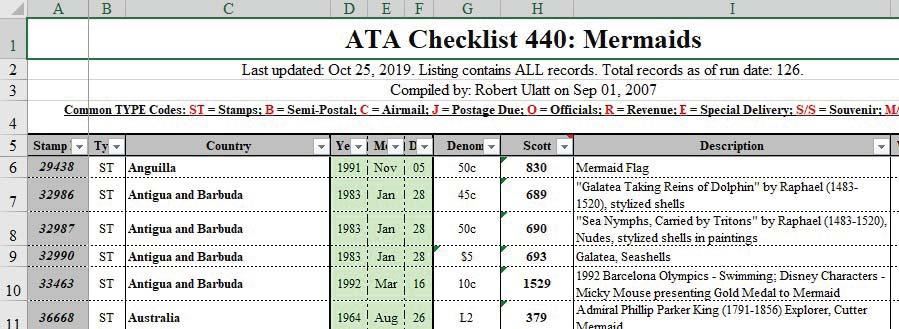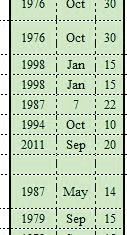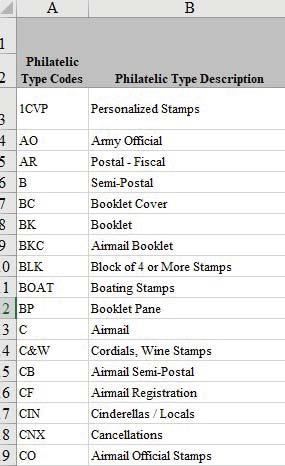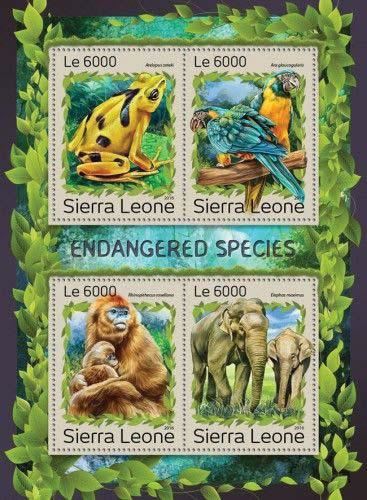- Home
- The Magic of Topical Checklists
The Magic of Topical Checklists – the Database and The Creation of ChecklistsThe below article was written by Beth Scully, ATA's Checklists Coordinator and appeared in the July-August 2020 issue of Topical Time. |
Hi everyone! My name is Beth Scully and I am one of the two volunteers who work on the American Topical Association database that produces the wonderful Topical Checklists that we all love.
But the questions we always get are: How are the Topical Checklists produced? What do some of the items mean? Well, it really is magic and a team effort. Dom Sgro, my compadre, is responsible for entering all the new stamps listed in Linn’s Stamp News each month. He hunts for pictures of the stamps to try and find every possible topic on every stamp. Some are simple – there’s only a tiger’s face on the stamp – some are more complicated and can have up to 21 different topics on them! I mean, have you looked at some of those souvenir sheets lately? Some have more items than the Sistine Chapel.
So, if Dom does the heavy lifting by adding all those new stamps each month, what do I do? Well, that’s a great question and, hopefully, by the time we make it through this article, we can both answer it. The short answer to start with is that I am responsible for updating all the checklists when our members send in requests, corrections or suggestions for a new topic. Here’s an example of a combined request from one a member: tigers, elephants, flowers and hats.
As you can see, this request is to update several topics at once. Now I get to put on my detective hat and hunt through the 420,000 stamps in our database to find the stamps to update. But hey, I always wanted to be like Sherlock Holmes!
But that begs the question of how Topical Checklists are created, so let’s go step-by-step through the process. Looking at the sample checklist below (Mermaids), we can see several blocks of information: Stamp ID, Type, Country, Year, Month, Day, Denomination, Scott No. and Description. Please note that this is not how the database is set up, so I will do it in order of the database from which these lists are created.

Stamp ID
The most important part of the checklist, for me, is the Stamp ID. This is generated automatically by the database whenever a new stamp is entered so – no – I can’t change them to be in order (you might be surprised how often I get that request!) This allows me to quickly find the stamp and make changes if I have the Stamp ID. Otherwise, out comes my deerstalker hat and “a hunting” I go! Depending on the information I receive, it can be easy or time-consuming. Either way, I always get my stamp!
Country
The next block in the database is the country. Please note that at the current time, we do not enter regions of countries. We do enter all countries recognized by Scott (with which we have an agreement to use its data for our checklists). We do enter a few other countries that are not recognized by Scott, such as Ajman, Manama and others. More on this later.

Date
The date is the next three blocks in the database set up by day, month and year, which is the reverse order on the checklist. There is a reason for that, trust me. Dates can be tricky, as countries may issue a series of stamps over several years, so a series may be broken up in the checklist. Sometimes, only the year is listed, so those will come first in the checklist. This can be frustrating I know (I get lots of emails about this!). We do the best we can to get this information correct, but – please – always send me an email at checklists@americantopical.org whenever you see an error in the date or anywhere else for that matter! We sort our checklists with the year listed first in the date area, so it is easier to read when we have only the year.
Denomination
The denomination can be a little tricky as well. I am going to skip this right now and get back to it later. You will understand why after we talk about the Philatelic Type. Stay tuned!
Scott Number
Next comes the Scott number as listed either in Linn’s Stamp News or the Scott catalog. Sometimes Scott changes the numbers and we make every effort to catch those. We can also enter the Michel, Stanley-Gibbons, Minkus, Yvert or other catalogs but only Scott numbers will print on the checklist due to our agreement with Amos Media.
If a stamp does not have a Scott number, or we cannot find one, we will still enter it if we have a number from another source (see previous point). The Scott number will either be “None” or “Unknown.” Ones that we know do not have a Scott number will be listed as “None.” Those that have not been given a Scott number yet, but a member requests them to be entered into the topic in question, will be given “Unknown.” I have a list that I try to go back and fix when stamps are given a Scott number. That was not always the case before Dom and I started keeping the database, so be patient while I try to fix as many as I can in my spare time.
Wow! We have only gotten through the first six blocks on the database and there are more left to explore. Let’s keep going!
Philatelic Type
 This is one of the most important parts of the database. It’s listed on a checklist as: Type right next to the Stamp ID.
This is one of the most important parts of the database. It’s listed on a checklist as: Type right next to the Stamp ID.
What kind of item is this? A single stamp, a miniature sheet, a souvenir sheet? Is it regular mail, airmail, semi-postal? What if it is more than one type? These are the questions that keep Dom and I up at night – no really, I have dreams about it. What if there’s a code you do not recognize on the list? No worries, we have you covered. On the third tab of the electronic version you receive, it lists all the Philatelic Types and their symbols. If you receive a mailed version, we try to remember to send the third page as well. If we forget, email me at the previously given address and I will make sure you get it. We are working on getting this list on the website as well for a quick reference tool.
Let’s say that we have a semi-postal stamp that is also a souvenir sheet. We go by the Scott number to determine the predominant Philatelic Type. This stamp would be listed as semi-postal in the database and type would be “B” on the checklist. We would also put in the description the symbol for a souvenir sheet (S/S) so the member would know what he or she is looking for. Hopefully, that explains the Philatelic Type so you can understand what it means . There is a list of more than 30 different philatelic types, ranging from a single stamp to postcards to officials to strips and blocks. Always check that on your lists. We have added the souvenir and miniature sheets in the past year as a Philatelic Type and are working to change those that were entered in the past without that designation. I will tell you that currently I have more than 30,000 souvenir sheets to change at the latest count! We are also going back to do pairs, blocks and strips. If you send in a request for updates or corrections and the PT needs to be changed, please let me know so the checklist is as accurate as possible.
 Denomination
Denomination
So, back to denomination. Sometimes a souvenir sheet, pair, block – really any type of item that has more than one denomination on it – will be listed as “Various” in the denomination block in the database and will transfer as that on the checklist. This helps as a visual clue that there is more than one stamp listed in this Stamp ID. Now, here is the kicker – what if it’s a block of four different endangered animals?
Well, in that case we would list the block as one item with the denomination as “Various” and list each individual stamp as separate items with their denominations on them. So, there would be five entries for that grouping. Some stamps have many more than that – have you looked at the Solomon Islands or Sierra Leone lately?
But what if the block was all one endangered animal? Then we would only enter the block and not the individual stamps alone. This was a decision made long before Dom and I started working on the database. Perhaps that needs to be addressed again, but that’s for a later discussion. Today we are focused on the magic of how a checklist is created.
Description
Now we’ve come to the heart of the database and the checklist. We try to put as much information as we have available into the description, however, we are limited to 250 characters. This may be why some information you would like to see in the description is not listed – I ran out of space.

From this description we determine what topics the stamp should be listed under. For example: This is a fairly simple description and would be listed under Seashells only. What if they become more complicated? Well, Dom and I put our thinking caps on and begin to determine the topics to which we think they belong. Remember, we are not the experts in your topic, so if the information is wrong (which it is sometimes in Linn’s and/or Scott), let me know and I can change it. If a topic is not included on a stamp, please send me a list. Even if it is only one stamp, send it to me to fix! I have worked with some marvelous members in updating large topics, such as airplanes, butterflies, seashells and others that have more than 30,000 stamps in some of them. We have worked for two years on some of these and I’m still working on a few of this size!
One more thing about descriptions regarding joint-issue stamps. To save space and make it clear, we use the ISO 3 letter codes for countries that issue stamps in tandem. We are working on a basic list of ISO codes as a reference tool, but you can always look them up on the Internet if you need to or email me what stamp it is and I can send you back the ISO codes for the countries mentioned.
Topics
So, this is where the rubber meets the road and determines into which topics a stamp will be listed. We currently have more than 1,400 different topics available in our listings. Recently, primates were broken down into separate categories. Domestic Cats is the next big topic I have on my list as well, as more than 100 updates need to be done. I have been working on breaking down all the Disney stamps into Mickey, Minnie, Donald, Daisy and other characters. That project will take at least six months.
One of the things for you to remember is that since a stamp can have more than one topic represented on it, if you want to just update your particular topic, please do not cross out the other topics on the list. For example, if you are interested in lilies and there are bees or butterflies listed on a few of the stamps, please do not cross them out when you send in updated information. Remember, the member who collects butterflies or bees needs that information as well.
Creating the Checklist
So, we have covered a lot of ground in a short period of time. We have filled in all the blocks of the database by hand and it is now time to run your list! We run a specific topic and the database automatically puts it in the Excel format for you. We can also create a PDF format if you do not have Excel.
The checklist is sorted by the following formats: Country, Type, Year, Scott number. That is what you see when the magic of the database has performed to create the checklist for you!
So now you have an insight into how the database is set up and how, through the magic of software, the checklists are created. Please go online and look at the new topics we have. Let me know of any new topics you would like to see. Remember that Jennifer at the ATA office can do custom topic listings as well.
Until next time, I’ll be working hard on all the updates, corrections and typos. If you would like to help with a topic, or update one in which you are interested, please let me know. We have several large topics that need to be worked on, such as trees, fish, art, Christmas, transportation and others.
